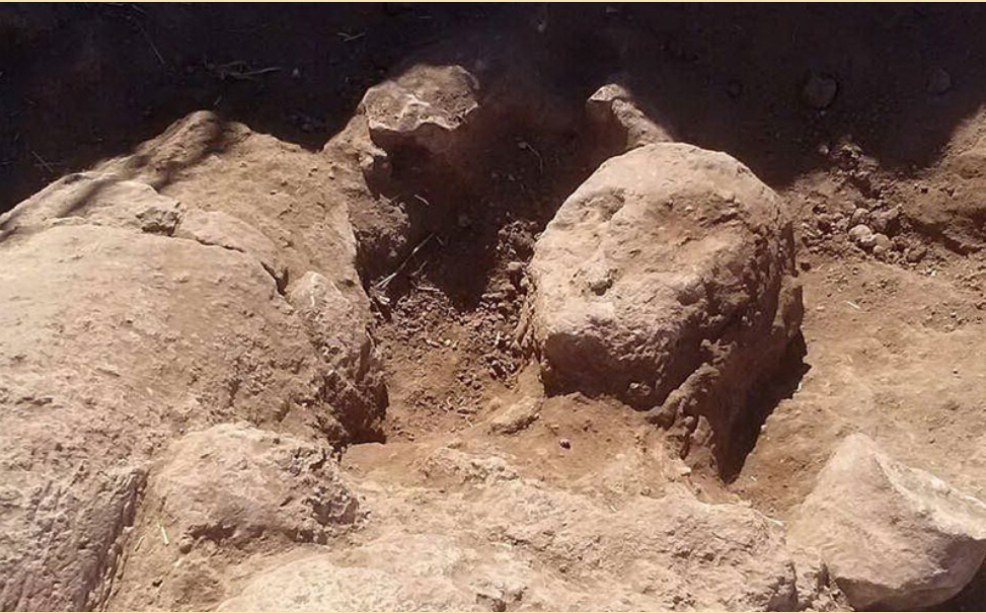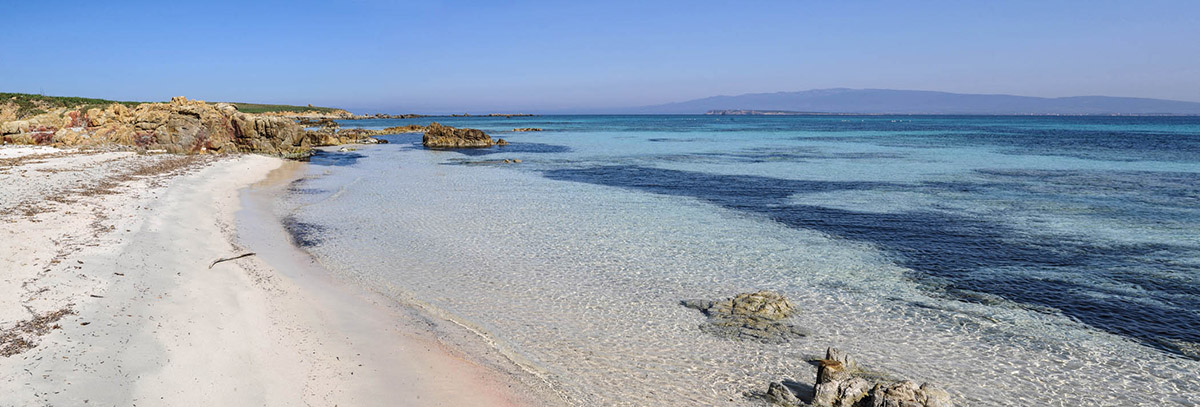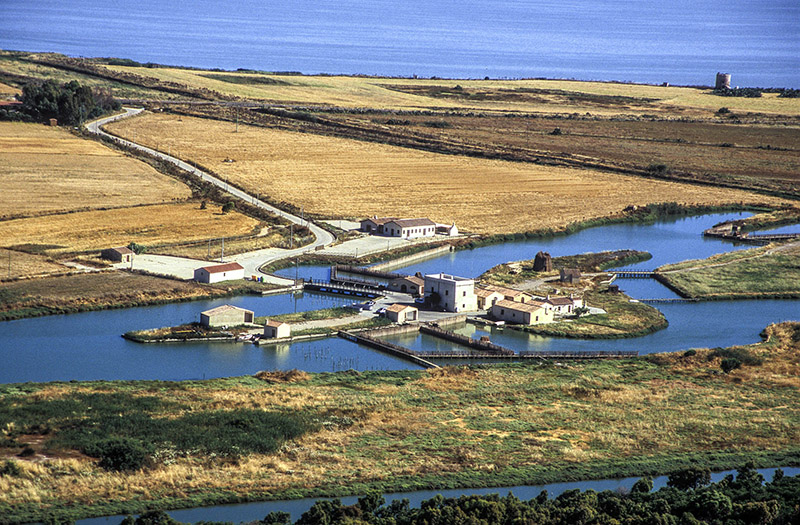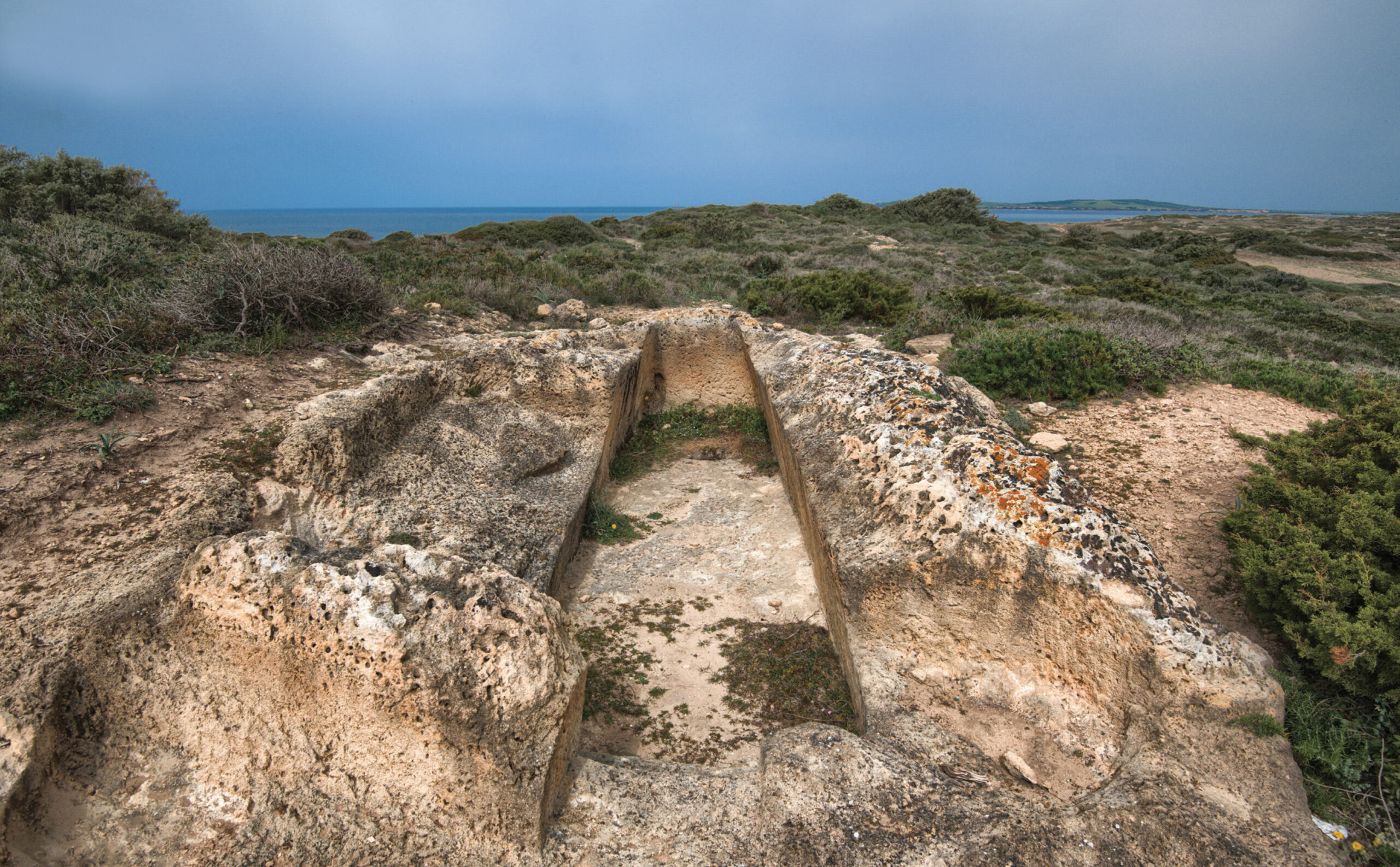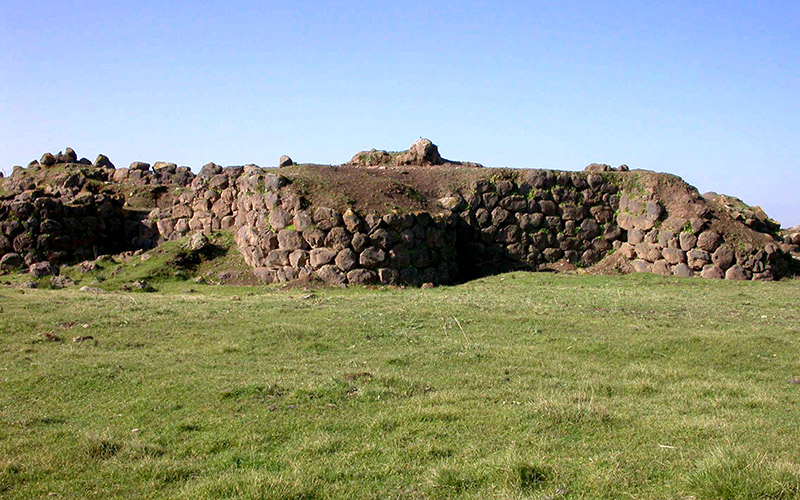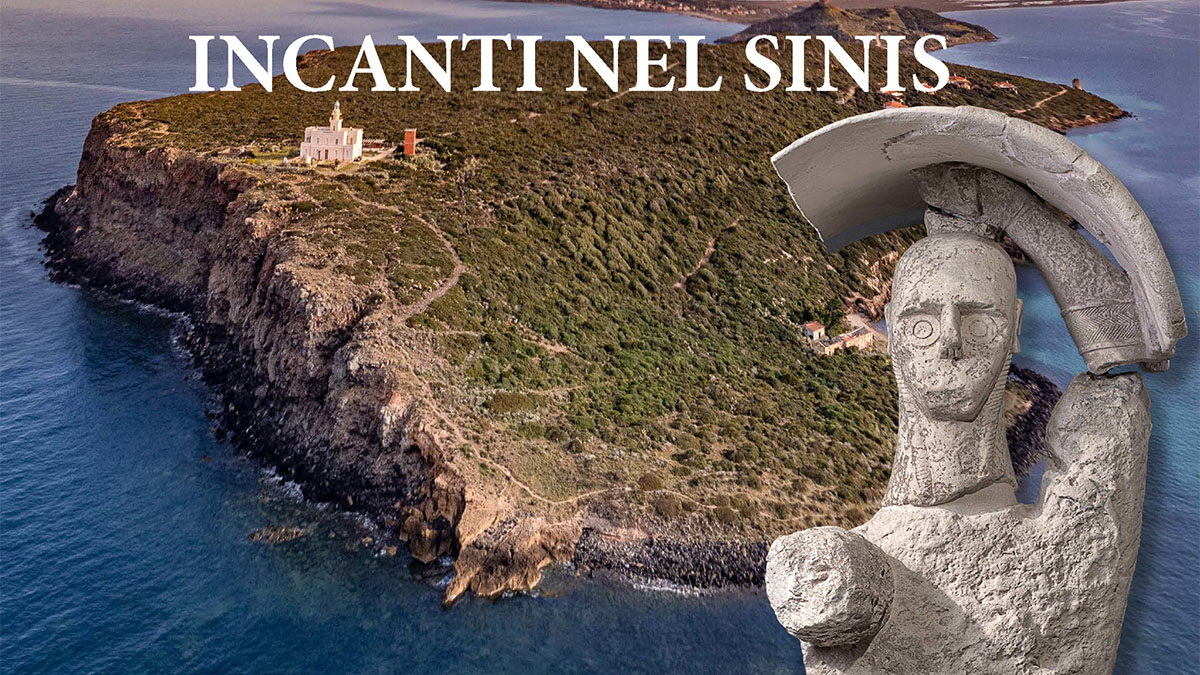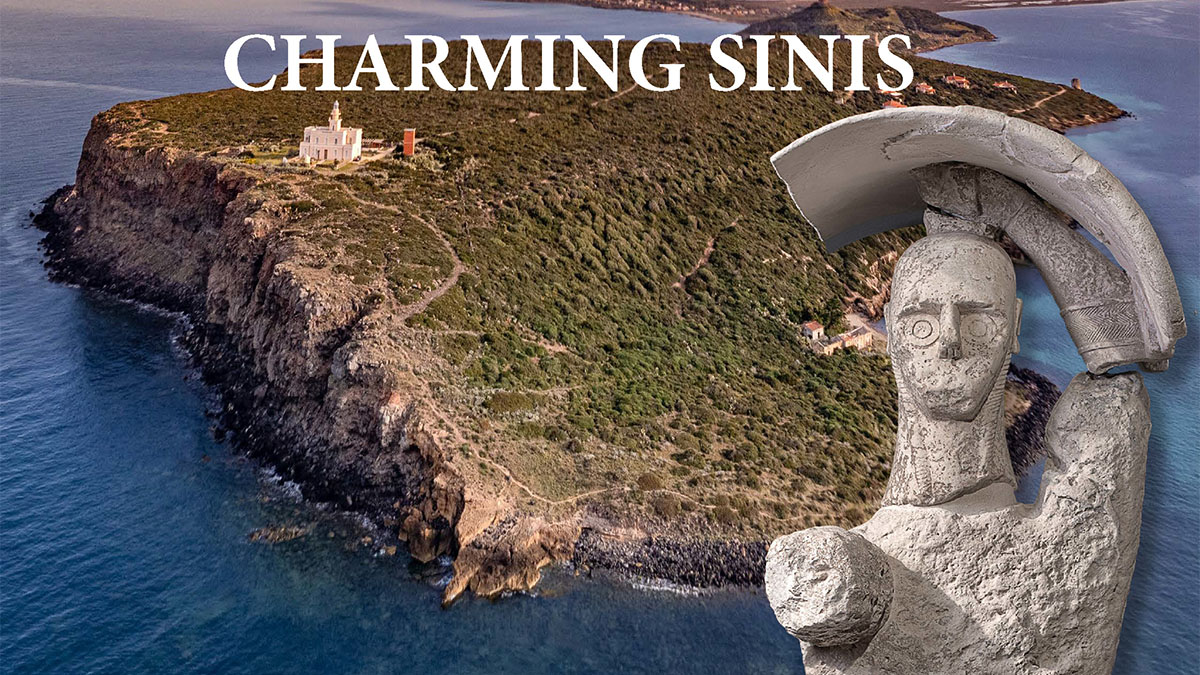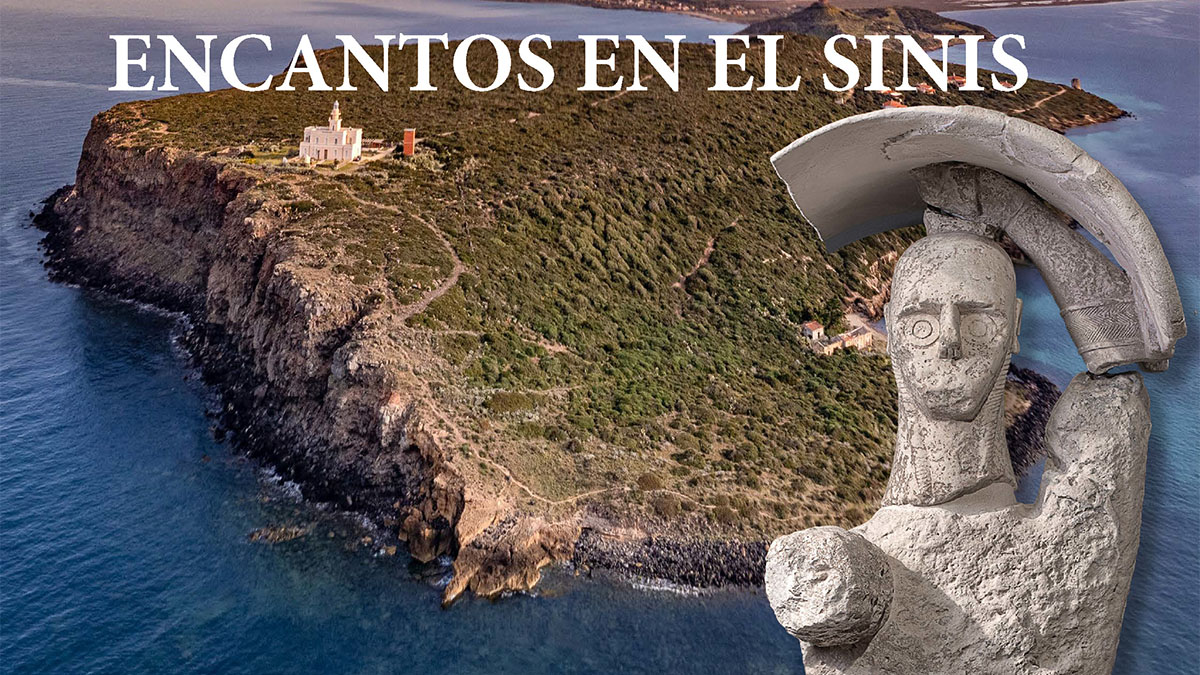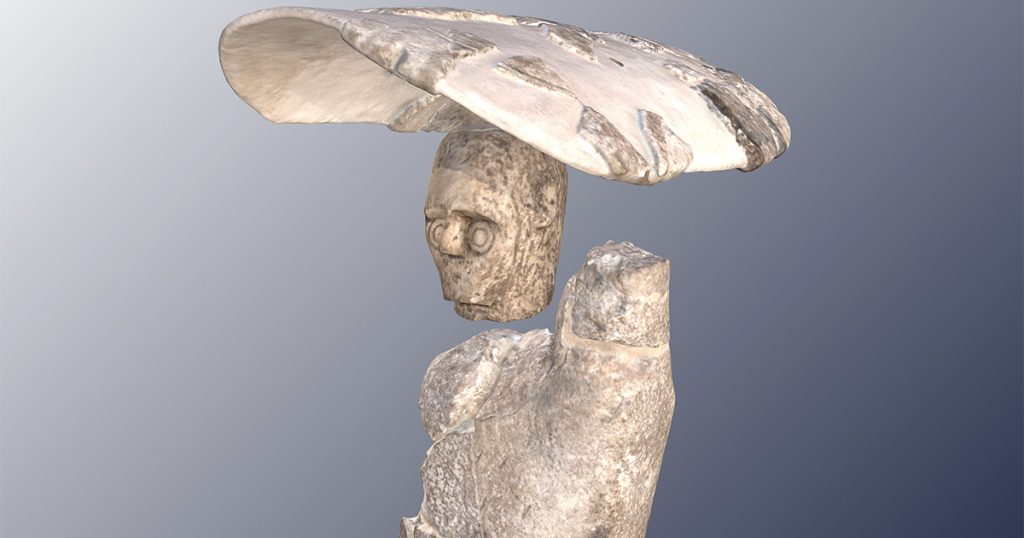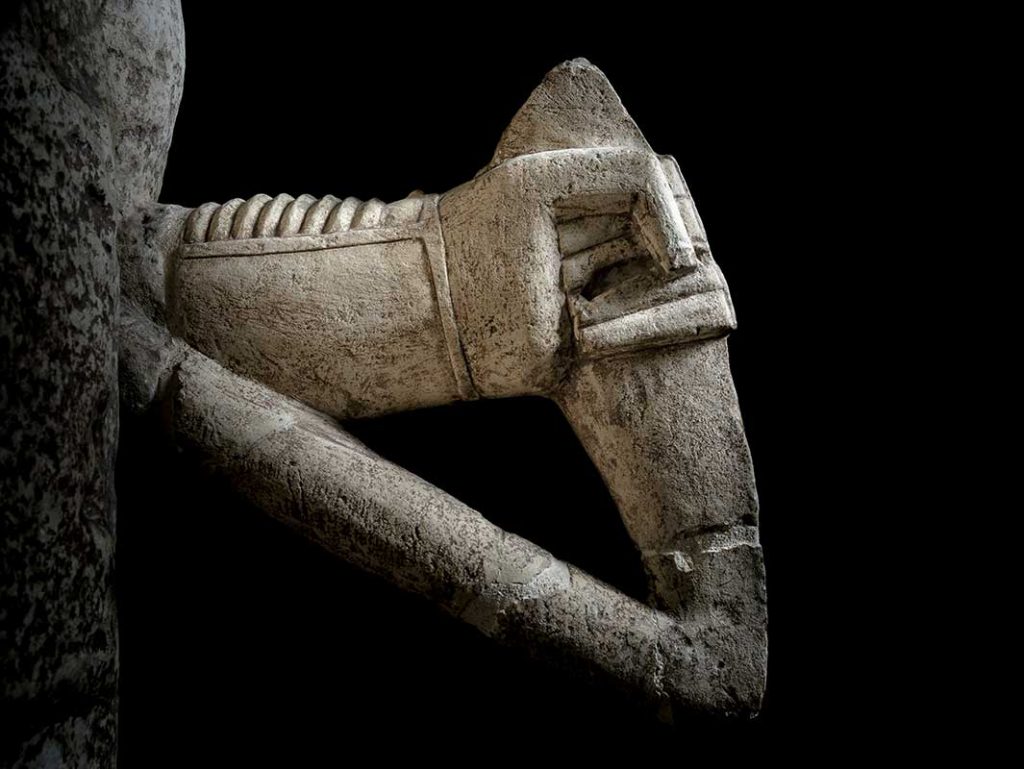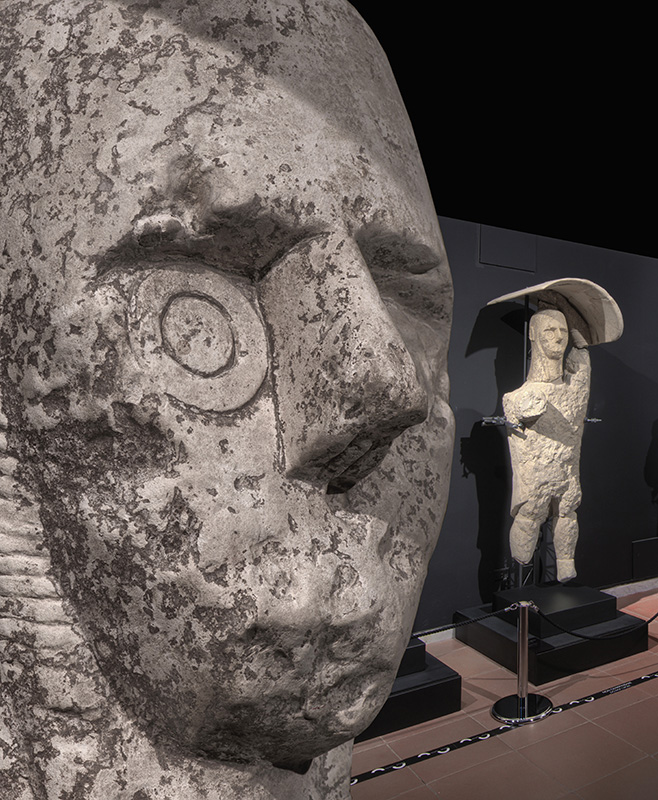The Sinis
From the Giants of Mont’e Prama starts the road to the widespread museum of Sinis – Terra di Mont’e Prama, a natural archaeological park that tells
a story of seven thousand years.
A fertile and welcoming land
The Sinis peninsula is a fertile and favourably situated stretch of land, with wetlands suitable for hunting and fishing, with small bays and a gulf offering protection to mariners.
The Sinis is a peninsula of central-western Sardinia consisting of calcareous and volcanic rock. It is partly separated from the rest of the island by the Cabras coastal wetland. The flat eastern portion is rich in wetlands and marshes. The central plateau reaches a maximum height of 90 meters above sea level. Close to the western extremity are the ruins of the ancient city of Tharros, built by the phoenicians and then developed by the carthaginians and the romans. The coast is rocky in the southern portion of Capo San Marco and, proceeding towards the north, becomes firstly sandy and subsequently marked by high cliffs.
Visiting the Sinis peninsula is a fascinating journey
through nature and the environment, archeology and history.
Distribution of settlements
There is scarce but significant archaeological evidence about the civilisations that came before the nuragic period.
The early bronze age is documented by the underground tombs of Serra ‘e is Araus and S’Arrocca Tunda in the area of San Vero Milis, the middle bronze age by the rock-cut chamber tombs (domus de janas) found at Serra ‘e is Araus and in the village of Sa Pesada Manna at Cabras.
The Sinis area has a particularly large number of nuraghes.
Between the middle and the late Bronze Age the first multi-centric settlements developed. They were tools for power and control over the territory, in which the nuraghes represented the functional cells, interdependent and organised in a hierarchical system. At the last count, the area has about ninety-three nuraghes and seventy-one nuragic villages, covering the period between the golden age of the nuraghes and their subsequent decline.
The most notable are the nuraghes Sàrgara, Piscina Arrubia, Su Cadalanu, Leporada and Matta Tramontis in the southern area, in the territory of Cabras, Su Cunventu, Spinarba, Nurache ‘e Mesu and Sa ‘e Procus in the northern part belonging to San Vero Milis. The well temple of Cuccuru ‘e is Arrius, on the southern shore of the Cabras wetland, was built in the late bronze age.
Important finds belong to the late bronze age and the early iron age, which are marked by the spread of farming settlements and the development of late nuragic material culture.
Moreover, in the period between the 12th and 9th centuries BC, objects of Cypriot origin were in use in the nuragic village of Su Murru Mannu at Tharros. In the subsequent period, in the 8th and 7th centuries BC, phoenician pottery was present at Tharros and in the Sinis countryside.
From the gulf of Oristano, along the Tirso river valley, pottery and bronze objects from the Near East reached the interior of the island.
All these finds confirm the presence of eastern peoples, mainly phoenician, who sailed along the western Mediterranean routes in search of raw materials and new markets for their refined artisan products.
In particular, around the 7th century BC the phoenicians established a settlement at Tharros.
Through punic and subsequently roman times, there was continuity in the development of settlements and religious practices, which lasted until the early Imperial period (1st century AD).




